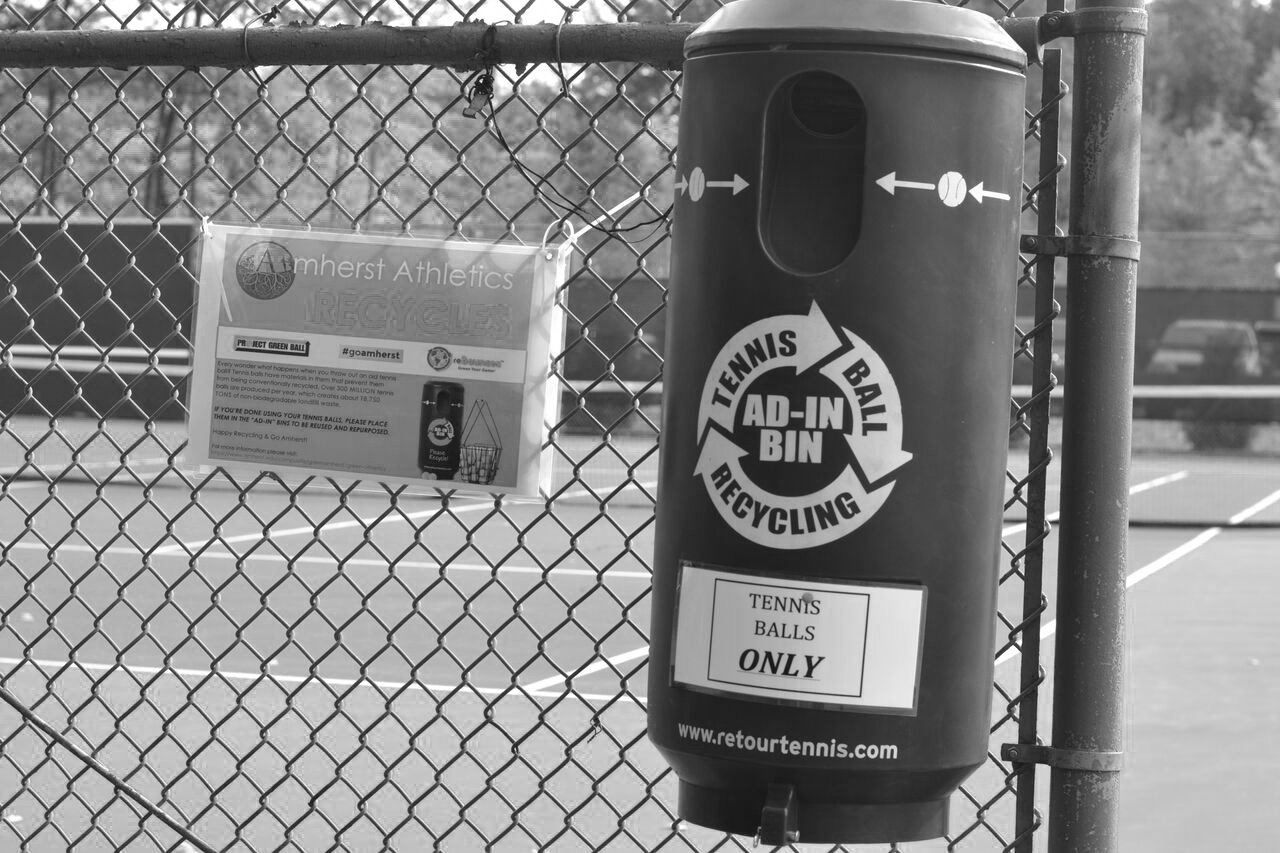

The Green Athletics committee, a student-led group aimed at increasing environmental sustainability in the Athletics Department, has begun carrying out plans to reduce athletics-related waste and energy consumption.
The committee, which first met on Sept. 23, has planned ways to make the Athletic Department more environmentally friendly by making changes in areas ranging from facilities to varsity team equipment. The students involved in the committee have proposed initiatives that could work toward the group’s goal.
“When people think about sustainability and environmentalism, they don’t usually think about athletics,” said Suhasini Ghosh ’16, the committee’s creator. “[But] sustainability is something that affects everybody.”
Laura Draucker, director of the Office of Environmental Sustainability, has been providing support to the committee. She said that increased communication between teams and students involved in athletics has helped identify and target common issues.
“It’s great to see people embrace it, and different sports teams coming together and identifying common challenges,” Draucker said.
One of the committee’s long-term goals is to become a formal group within the Athletic Department.
“There are definite opportunities for our department to support the initiatives by Green Athletics and do more to support sustainability on campus,” said Don Faulstick, director of athletics. “There is no doubt that Green Athletics can be an integral part of our department.”
Ghosh, an environmental studies major and member of the women’s tennis team, thought of the idea for Green Athletics last semester when she was enrolled in Footprints on the Earth, an environmental sociology class. For the final project, students were required to think of an idea for environmental change that could be implemented on campus or in a community meaningful to the students.
“I was thinking about the little yellow things that I hit over the net every single day,” Ghosh said. “I was like, well, where do those tennis balls go? … I started doing some research and I found out that what’s in the tennis balls, none of it is recyclable — it’s all materials that go straight to landfills.”
After doing further research, Ghosh found a company that would repurpose tennis balls and decided to take her class project a step further. Ghosh, who was working in the Office of Environmental Sustainability, showed the plan to Draucker, who provided support for the idea. She contacted her coach and Faulstick about the implementation of such a plan. At the beginning of this semester, recycling receptacles for tennis balls were set up at the tennis courts next to Hitchcock Field.
“It was super easy and it wasn’t like anyone was stopping me,” Ghosh said. “It was a matter of figuring out who to talk to and how to set it up.”
After the success of the tennis ball recycling system, Ghosh decided to form the Green Athletics committee to address other athletics-related waste. She reached out to interested friends on other sports teams and publicized the formation of the committee to the campus. Currently, the committee has 17 members, including students from nine varsity sports and several club sports, as well as some students who are not involved in athletics.
“We’ve had a few meetings, and we’ve divided up into different projects that we want to accomplish for the semester,” Ghosh said. “We’ve already heard so many different kinds of ideas and things that I just wouldn’t have thought of.”
Sam Schneider ’18, a member of the baseball team, was in Ghosh’s class last semester when she proposed the idea for the committee.
“We have been very happy with the turnout so far,” said Schneider, who was involved in recruitment for the committee. “As of now, we are still in the planning stages of many of our projects but we are very happy with the progress we have made.”
One of the student-led projects aims to reduce wasteful energy consumption in athletic facilities. The committee is investigating how to reduce lighting in the Coolidge Cage and other areas of Alumni Gym, possibly by installing sensor-operated lighting. Students are also investigating ways to make exercise machines more energetically efficient and to reduce waste and to promote recycling throughout the building.
“The athletics buildings consume a significant amount of energy due to their relative size and also their age,” said Tom Davies, the college’s director of design and construction. According to Davies, a building improvement project is required in order to reduce the energy footprint of the buildings by a significant amount. The goal of achieving a carbon-neutral footprint from a statement by the board of trustees in February may include such a project.
Other projects that the committee is tackling include reducing plastic and food waste in the meals that athletes receive from Valentine for away games and expanding a shoe donation program, initiated by the women’s track team last semester, to all sports.
Another initiative aims to recycle the plastic Solo cups used on campus. These plastic cups currently cannot be recycled because the college’s recycling stream does not process these plastics. The committee hopes to implement the project by this year’s homecoming.
“We figured out a program that will take the cups and recycle them for us. The issue is that we need to clean them and stack them,” Ghosh said. “We’re going to make it a community service thing.” Ghosh said that she plans to work with Athletics Team Engagement Leaders, who are students selected from varsity and club sports teams to organize community engagement events for their teams, so that teams can gather the cups from specialized receptacles in the socials, clean and stack them, and ship them to the separate recycling facility.
“No matter what your interests are, it affects everybody,” Ghosh said, “and I think that the point of this committee is to show how you can help be sustainable in all aspects of life.”